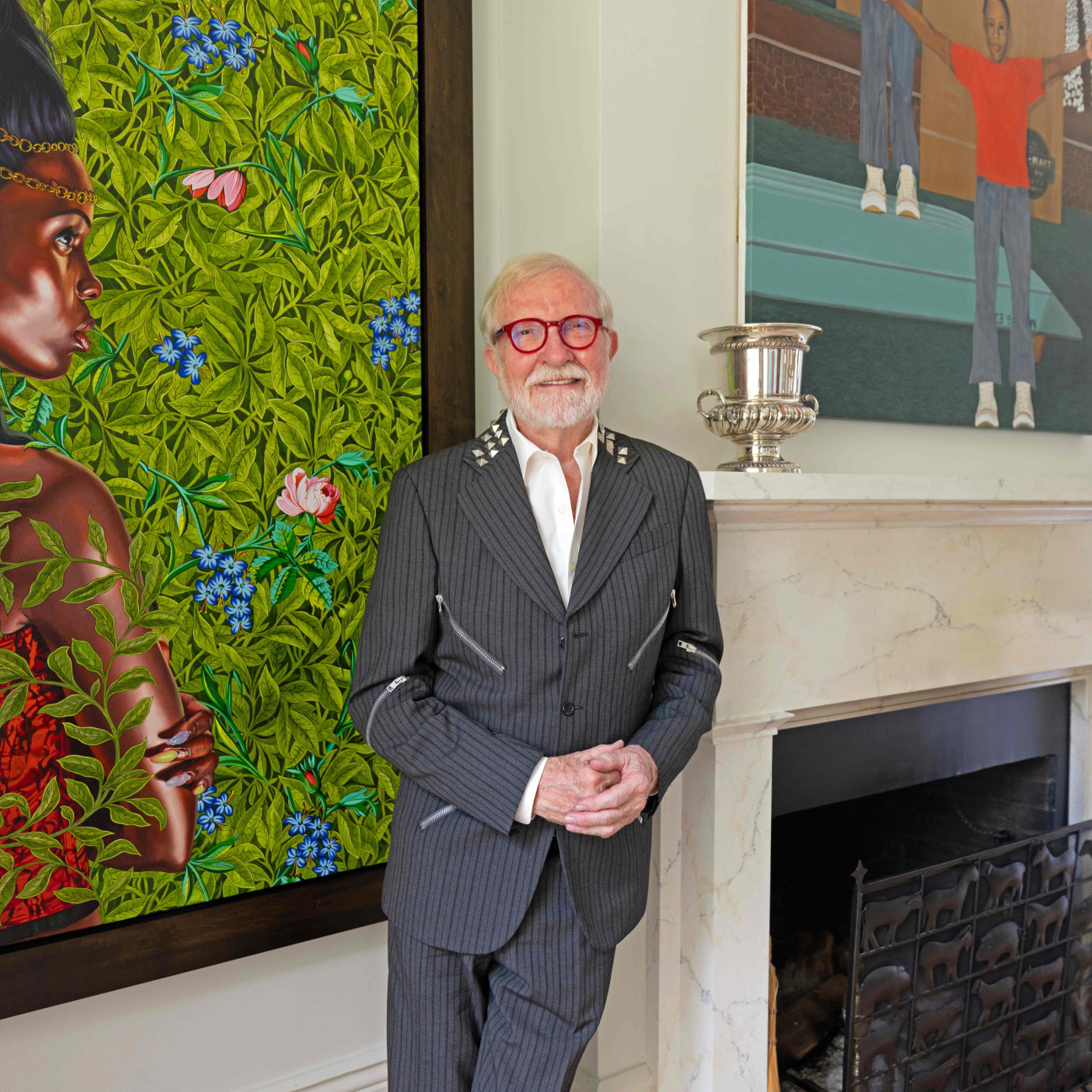
If there’s one word that could never be used to describe Steve Wilson and Laura Lee Brown’s taste in art, it’s “predictable.” In the couple’s sprawling Kentucky home, gallery walls run more than 100 pieces deep and stoneware hares curl up in the corners.
Wilson, the founder of 21c Museum Hotels, began acquiring works during his first year of college, drawn to a Picasso poster from a traveling salesman that reflected his own creative malaise shortly after dropping his fine art major. Eventually, he found his way into the market with Brown by designing boutique hotels across the country that double as art museums. “Across all 21c locations, we have more exhibition space than any other institution in America,” he tells CULTURED.
In this Collector Questionnaire, Wilson unearths some of his trove’s biggest surprises, including Bison-dung pottery, 36 penis-molded champagne glasses, and a hard-fought battle for spray-painted pigeons.
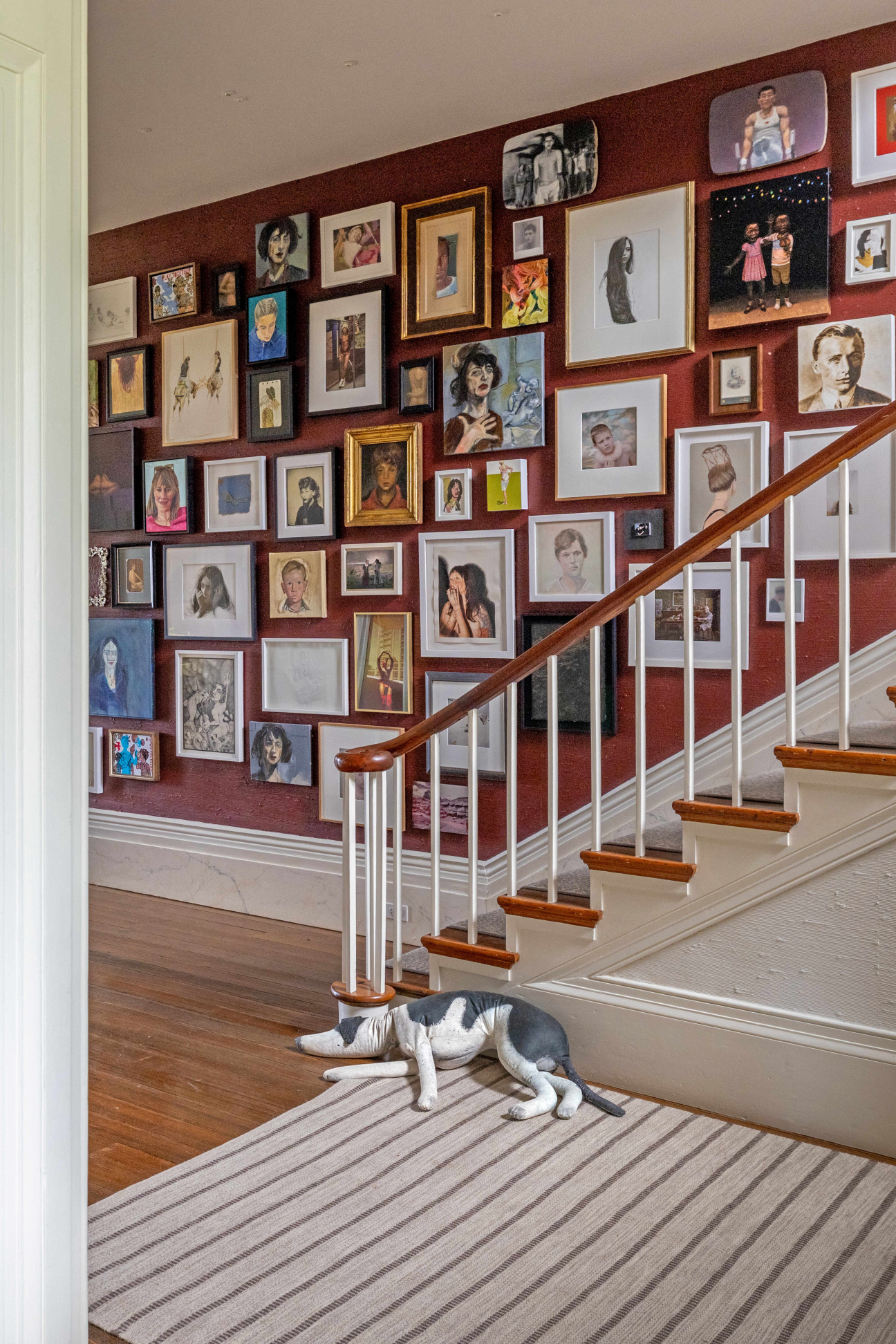
How does working in hotels change the way you think about designing your own living space?
I was not formally educated as a designer. I would say that the way my wife, Laura Lee, and I live at home has influenced our unique style at the 21c Museum Hotels. We live with art at home, and when we began looking for ways to share our collection, we wanted others to understand that art should be lived with and enjoyed—not just visited in a museum.
I was raised in a conservative household where uncomfortable conversations were avoided. Sex was not discussed, and that silence bred shame and secrecy. Through several personal experiences, I began to understand the healing power of art. I was also inspired to use provocative art to encourage acknowledgment and conversation.
Where does the story of your personal collection begin?
I was raised on a farm in west Kentucky and attended Murray State University, where I tried to major in art. As a freshman, my drawing teacher tore a drawing off my easel in class and told me I didn’t belong there. Embarrassed and unsure of my talent, I changed my major to psychology, but never strayed far from my creative interests and love of art. That same year, a traveling art dealer came to the university, and I bought a Picasso poster titled Manolo Huguet, which became the first work in my collection. It was a simple sketch of a man with a sad face that reminded me of myself at the time.
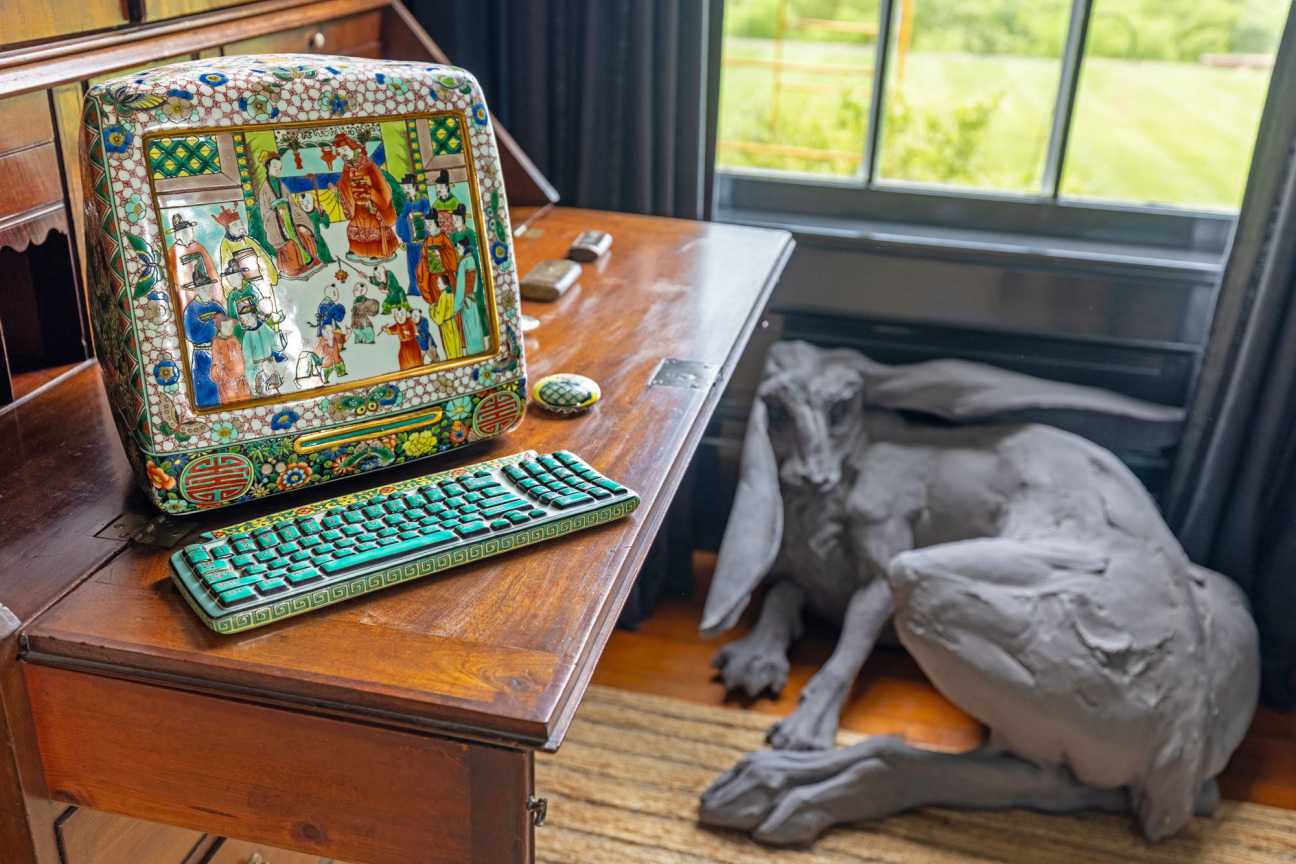
Which work in your home provokes the most conversation from visitors?
Undoubtedly, the work that gets the most comments is a set of 36 champagne glasses displayed in a clear cabinet on a column. Titled Kocktail, 2004, by Kendell Geers, purchased from Galleria Continua in San Gimignano, Italy, they are cast from the artist’s erect penis. The piece is both a sculpture and a performance. As a sculpture, it is complete as is, but as a performance, it is meant to be completed by drinking champagne from the glass. They were created for a grand reception at the Centre Pompidou in Paris, and later sold in sets of 36. We’ve used them at a New Year’s Eve dinner at our home.
You have 158 pieces on one wall in your home’s entryway. Can you describe the process of fitting them together?
The most challenging part was getting started. Typical of our collection, I didn’t restrict myself to any criteria or media. I don’t think it would have been as interesting to use only black-and-white photographs or oil paintings. I did limit the work to nothing larger than 24 inches. I had significant help from the art department at 21c Museum Hotels, who built a complicated scaffold over the stairway to reach the ceiling. Initially, I chose 80 works from the collection’s catalog, but during installation, we realized that it wasn’t enough and selected more. Certain pieces held personal memories I wanted to include, but choosing works randomly has been a great joy for Laura Lee and me. Every walk up or down the stairs sparks a visual memory—like visiting Ilse Haider in her studio in Austria, or the honor of being gifted a watercolor by Titus Kaphar, painted at 21c in Lexington. Some works have been in the collection for 25 years, while others are fairly new.
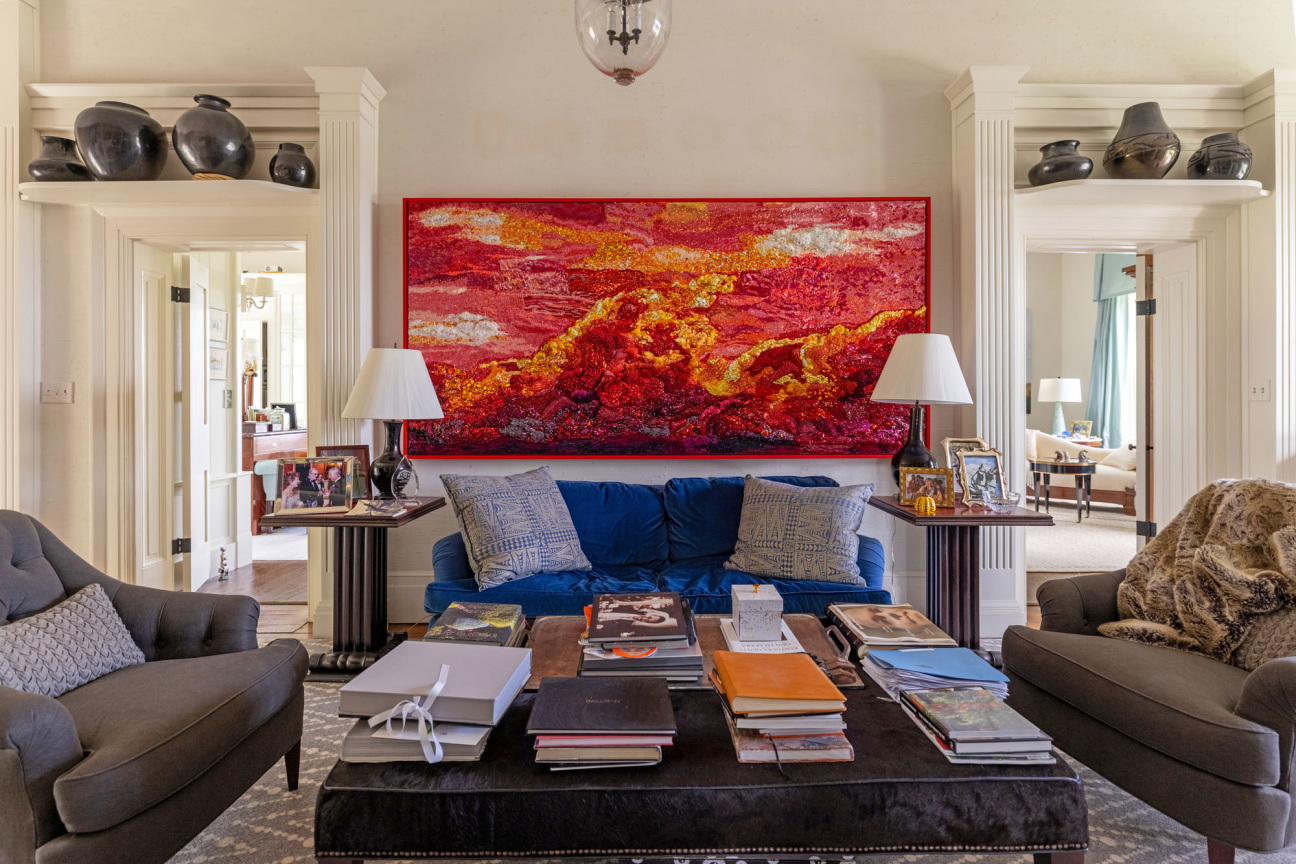
What factors do you consider when expanding your collection?
Laura Lee and I have one rule for collecting: We only acquire works by living artists. We named our hotel museums 21c to represent the 21st century. We want our audiences to understand the difference between contemporary and modern art, a distinction often confused. We don’t collect for investment, nor do we seek advice when acquiring work. Alice Gray Stites, our curator, does a magnificent job pulling pieces from the collection to fit a curatorial story. Laura Lee has a phrase that describes it well: “It has to hit us in the heart or gut” to get our attention. Our collection is diverse, with nearly 40 percent deriving from female artists, and over 50 countries represented.
What feelings would you like your collection to inspire in the people who experience it?
Across all 21c locations, we have more exhibition space than any other institution in America. We want our visitors to have a mental or emotional reaction to the works on display. We don’t aim to offend, but we do like to provoke. Inspired by the conservative environments in which Laura Lee and I were raised, we want people to talk about what they see. In most cases, a picture or painting inspires an emotion that finds a voice. One frequent visitor to 21c Bentonville said, “I don’t always understand the art, but I think I’m a better person for staying here.”
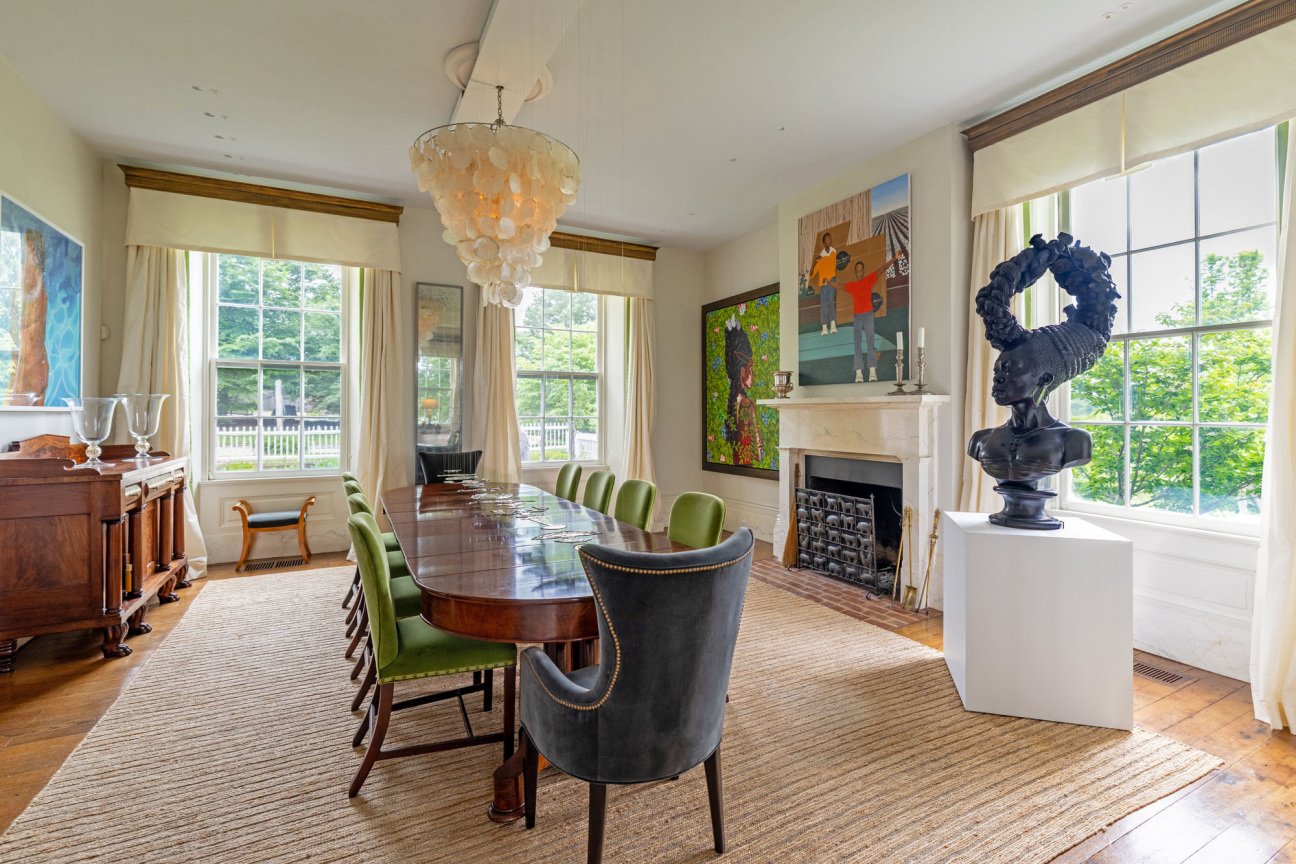
Do you collect anything other than art?
Laura Lee and I raise buffalo on our farm in Kentucky, a passion we started about 30 years ago. My interest in buffalo led me to collect Blackware pottery from Santa Clara Pueblo, New Mexico. Made from red clay like traditional Native American pottery, Blackware was first created by accident when a pot was fired with bison dung, producing dark black smoke that stained it black. After experimenting, potters began intentionally creating these thick coil pots, rubbing them with a rock for a high sheen and carving deep tribal patterns that look strikingly contemporary. I have pots from five generations, including works by Margaret Tafoya and Nathan Youngblood, whose designs appear timeless.
What is the strangest negotiation you’ve ever had with an artist or dealer?
We’ve had many unconventional acquisitions, but perhaps the most unusual was Some Pigeons Are More Equal Than Others by Julian Charrière and Julius von Bismarck. The work features a series of photographs of pigeons with brightly colored wings, necks, and bodies, alongside a contraption resembling a cross between a mailbox and a birdhouse. The conceptual piece suggests a pigeon could fly into the contraption and emerge spray-painted, with biodegradable, non-harmful paint. I loved the humor and wanted to buy the contraption and portraits. Initially, the artists refused to sell to us, believing our collection wasn’t prestigious enough; they preferred a recognized institution. The next day, a New York Times article by Patricia Cohen featured our collection. After reading it, the artists contacted us, eager to sell. The story was so unique that I couldn’t resist.
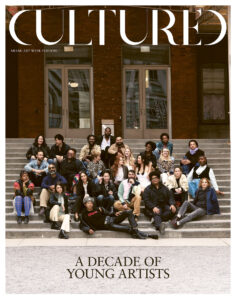
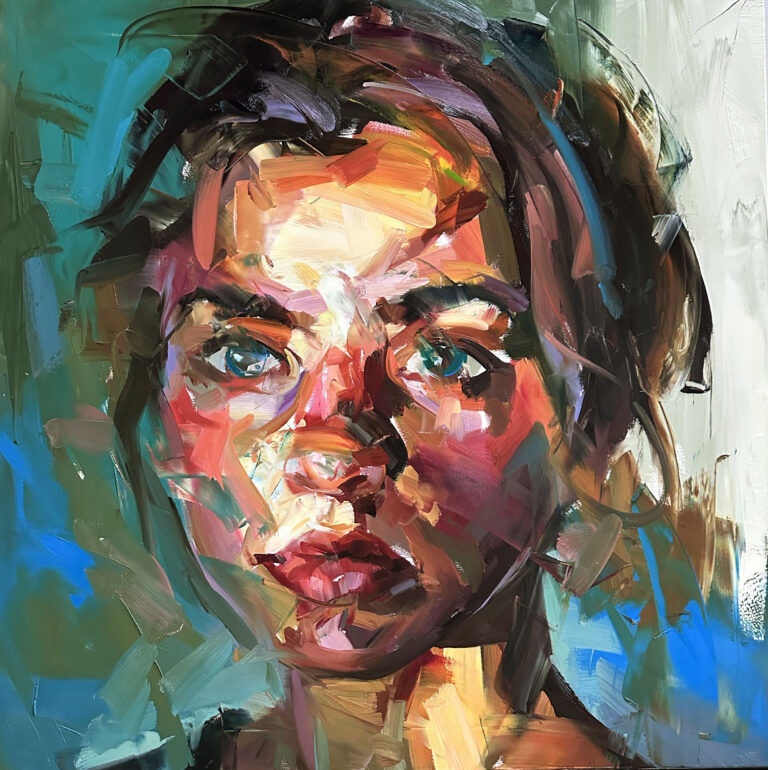
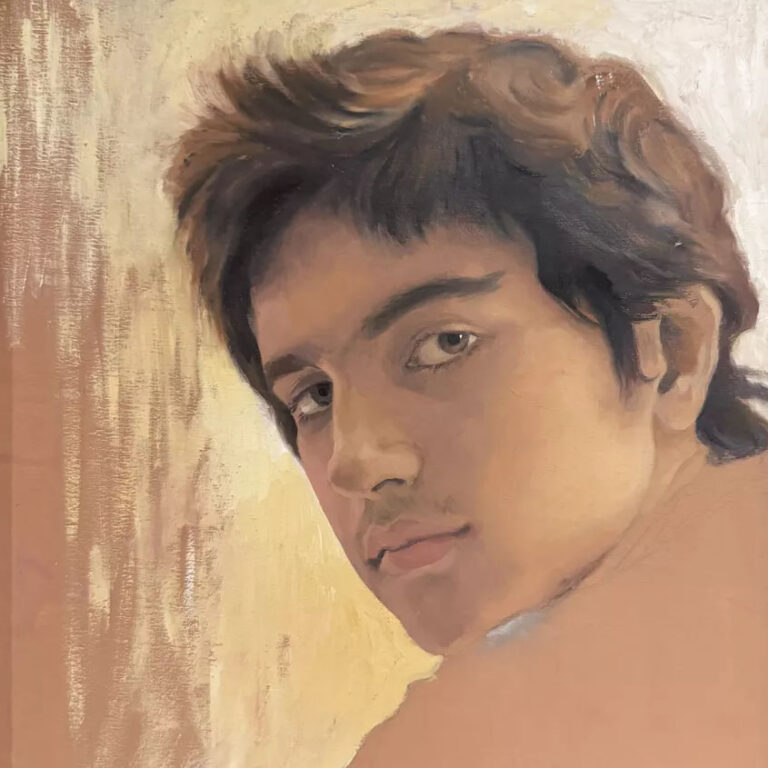
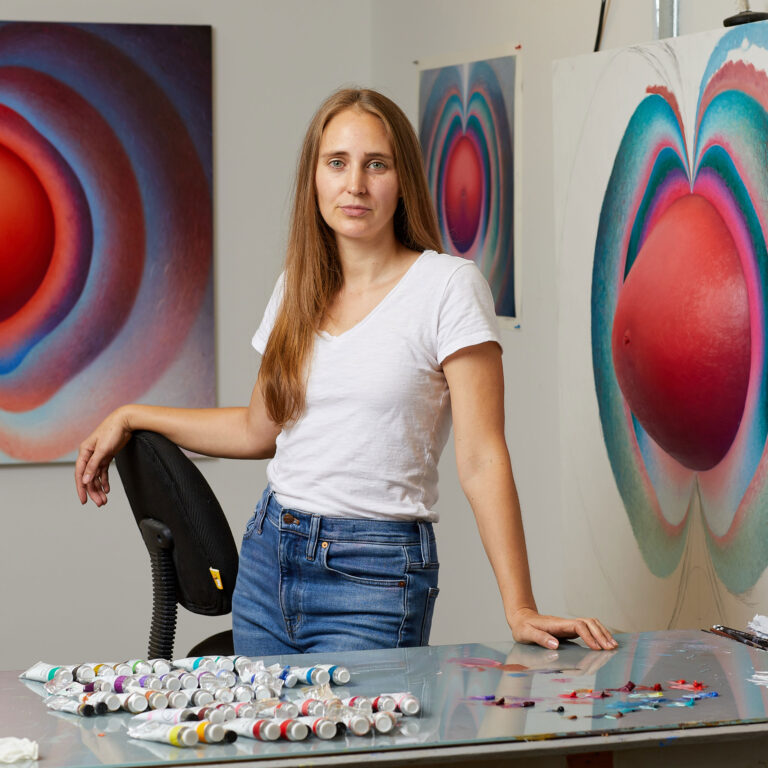
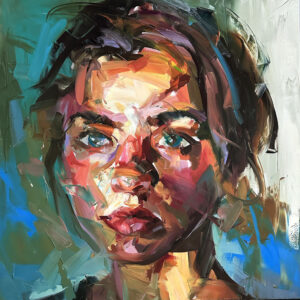
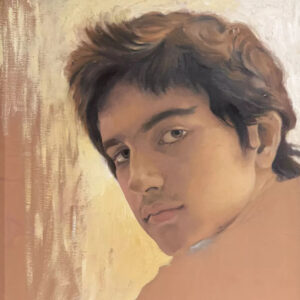
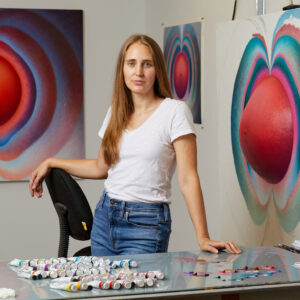

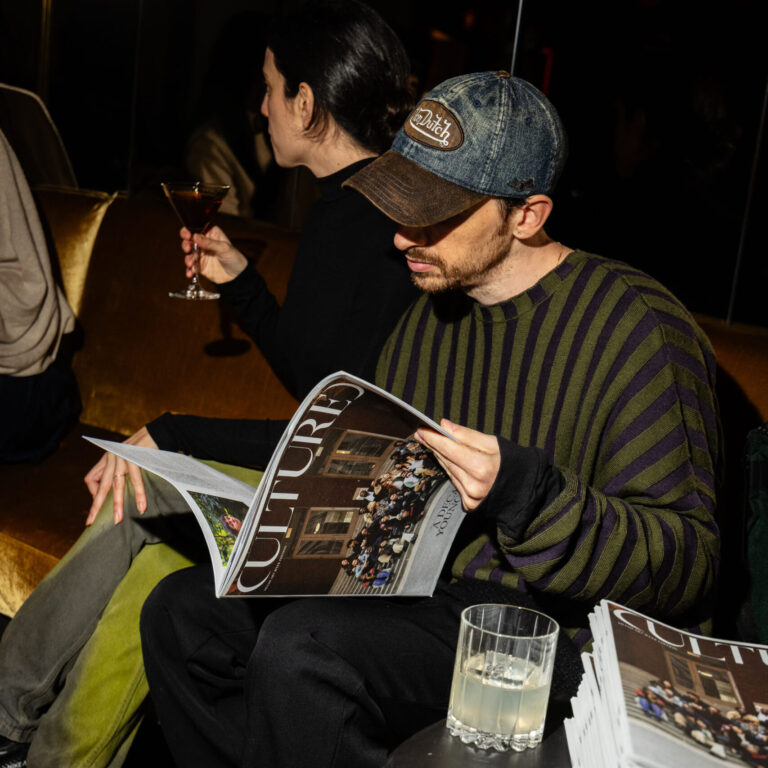

 in your life?
in your life?

